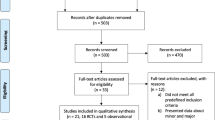Abstract
Introduction
The classical closed method using the Veress needle and the open trocar placement technique with the Hasson cannula are commonly used to establish the pneumoperitoneum required for laparoscopic procedures. A less described and practiced technique is direct trocar insertion [DTI]. Those who are unfamiliar with DTI as an alternative procedure may be under the impression that it is hazardous.
Method
In this retrospective study, we analyzed DTI for peritoneal access and primary port placement in the first 100 consecutive cases of laparoscopic surgery and compared it against the first 100 cases using the Veress needle (VN) technique. Injuries were classed as major or minor depending on whether or not they significantly affected the performance of the procedure and the eventual outcome.
Results
Neither group suffered mortality or any major injuries. Minor injuries were infrequent. Peritoneal access and creation of laparoscopic workspace were attained faster and more efficiently by the direct trocar insertion technique. In the DTI group, the average time taken to establish pneumoperitoneum was one minute (42sec-3min04sec) while in the VN group it was 3.8minutes (2min40sec-8min10sec) which was significant (p<.05).
Conclusion
Our results and those of other studies suggest that the direct trocar insertion technique is a safe, fast and reliable alternative to traditional techniques of primary port placement in laparoscopic procedures.
Similar content being viewed by others
References
Singh R, Kaushik R, Sharma R, Attri AK. Non-biliary mishaps during laparoscopic cholecystectomy. Indian J Gastroenterol 2004;23:47–9.
Champault G, Cazacu F, Taffinder N. Serious trocar accidents in laparoscopic surgery: A French survey of 103,852 operations. Surg Laparosc Endosc 1996;6:367–70.
Lalchandani S, Phillips K. Laparoscopic Entry Technique-A Survey of Practices of Consultant Gynaecologists. Obstetrical & Gynecological Survey 2006;61:234–5.
Prieto-Díaz-Chávez E, Medina-Chávez J-L, González-Ojeda A, Anaya-Prado R, Trujillo-Hernández B, Vásquez C. Direct Trocar Insertion without Pneumoperitoneum and the Veress Needle in Laparoscopic Cholecystectomy: a Comparative Study Acta Chir Belg 2006;106:541–4.
Byron JW, Markenson G, Miyazawa K. A randomized comparison of veress needle and direct trocar insertion for laparoscopy. Surg Gynecol Obstet 1993;177:259–62.
Vilos GA, Ternamian A, Dempster J, Laberge PY. Laparoscopic entry: a review of techniques, technologies, and complications. J Obstet Gynaecol Can 2007;29:433–65.
Theodoropoulou K, Lethaby DR, Bradpiece HA, Lo TL, Parihar A. Direct Trocar Insertion Technique: an Alternative for Creation of Pneumoperitoneum. JSLS. 2008;12:156–58
Molloy D, Kaloo PD, Cooper M, Nguyen TV. Laparoscopic entry: a literature review and analysis of techniques and complications of primary port entry. Aust N Z J Obstet Gynaecol 2002;42:246–54.
Vilos GA, Ternamian A, Dempster J, Laberge PY. Laparoscopic Entry: A Review of Techniques,Technologies, and Complications J Obstet Gynaecol Can 2007;29:433–47.
Zakherah MS. Direct Trocar versus Veress Needle Entry for Laparoscopy: A Randomized Clinical Trial. Gynecol Obstet Invest 2010;69:260–3.
Angioli R, Terranova C, De Cicco Nardone C, et al. A comparison of three different entry techniques in gynecological laparoscopic surgery: a randomized prospective trial. Eur J Obstet Gynecol Reprod Biol 2013;171:339–42.
Agresta F, De Simone P, Ciardo LF, Bedin N. Direct trocar insertion vs Veress needle in nonobese patients undergoing laparoscopic procedures: a randomized prospective singlecenter study. Surg Endosc 2004;18:1778–81.
Kaloo P, Cooper M, Reid G. A prospective multicentre study of laparoscopic complications related to the direct-entry technique. Gynaecol Endosc 2002;11:67–70.
Nezhat FR, Silfen SL, Evans D, Nezhat C. Comparison of direct trocar insertion of disposable and standard reusable laparoscopic trocars and previous pneumoperitoneum with Veress needle. Obstet Gynecol 1991;78:148–50.
Schaller G, Kuenkel M, Manegold BC. The optical 'Veress needle" initial puncture with a minioptic. End Surg All Tech 1995;3:55–7.
Inan A, Sen M, Dener C, Bozer M. Comparison of direct trocar and veress needle insertion in the performance of pneumoperitoneum in laparoscopic cholecystectomy. Acta Chir Belg 2005;105:515–8.
Jacobson MT, Osias J, Bizhang R, et al. The direct trocar technique: an alternative approach to abdominal entry for laparoscopy. JSLS 2002;6:169–74.
Cogliandolo A, Manganaro T, Saitta FP, Micali B. Blind versus open approach to laparoscopic cholecystectomy: a randomized study. Surg Laparosc Endosc 1998;8:353–5.
Biojo RG, Manzi GB. Safe laparoscopic surgery: tubal ligation without prior pneumoperitoneum. Surg Laparosc Endosc 1995;5:105–10.
Yerdel MA, Karaylcin K, Koyuncu A, et al. Direct trocar insertion versus Veress needle insertion in laparoscopic cholecystectomy. Am J Surg 1999;177:247–9.
Fuller J, Scott W, Ashar B, Corrado J. Laparoscopic trocar injuries: a report from a U.S. Food and Drug administration Center for Devices and Radiological Health. Systematic Technology Assessment of Medical Products Committee. Finalized: November 7, 2003.
Ahmad G, O'Flynn H, Duffy JM, Phillips K, Watson A. Laparoscopic entry techniques. Cochrane Database Syst Rev 2012;2:CD006583. doi: 10.1002/14651858.CD006583.pub3
Childers JM, Brzechffa PR, Surwit EA. Laparoscopy using the left upper quadrant as the primary trocar site. Gynaecol Oncol 1993;50:221–5.
Kaali SG, Barad DH, Merkatz IR. Comparison of visual and tactile localization of the trocar tip during abdominal entry. J Am Assoc Gynecol Laparosc 1994;2:75–7.
Author information
Authors and Affiliations
Corresponding author
Rights and permissions
About this article
Cite this article
Godara, R., Bansal, A.R., Verma, S. et al. Direct trocar insertion without the pneumoperitoneum in laparoscopic surgery - Is this a safe technique?. Hellenic J Surg 87, 415–418 (2015). https://doi.org/10.1007/s13126-015-0248-8
Received:
Accepted:
Published:
Issue Date:
DOI: https://doi.org/10.1007/s13126-015-0248-8




